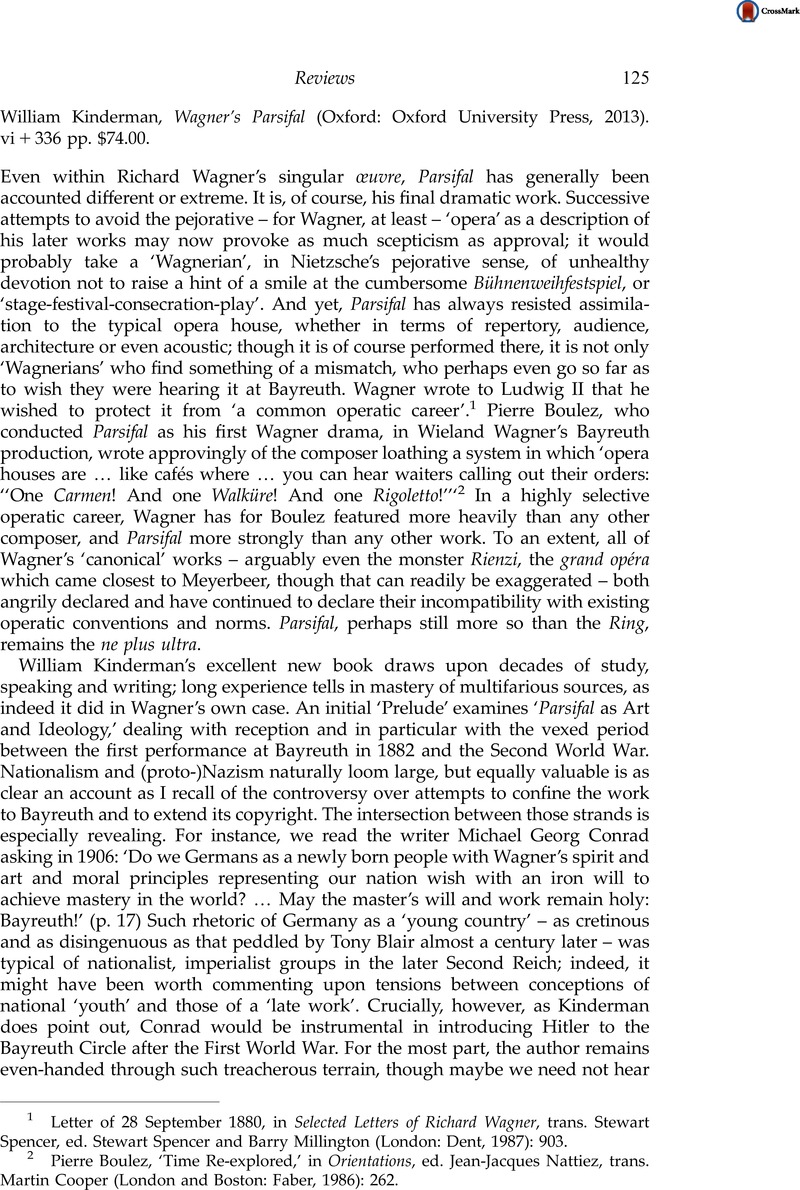No CrossRef data available.
Published online by Cambridge University Press: 30 March 2015

1 Letter of 28 September 1880, in Selected Letters of Richard Wagner, trans. Stewart Spencer, ed. Stewart Spencer and Barry Millington (London: Dent, 1987): p. 903.
2 Boulez, Pierre, ‘Time Re-explored,’ in Orientations, ed. Jean-Jacques Nattiez, trans. Martin Cooper (London and Boston: Faber, 1986): p. 262Google Scholar.
3 Gutman, Robert W., Richard Wagner: The Man, his Mind, his Music (New York: Harcourt Brace Jovanovich, 1968)Google Scholar.
4 Syer, Katherine R., ‘“It left me no peace”: From Carlo Gozzi's La donna serpente to Wagner's Parsifal’, The Musical Quarterly 94 (2011): pp. 325–380CrossRefGoogle Scholar.
5 On that conflict, see, Berry, Mark, ‘Is it Here that Time becomes Space? Hegel, Schopenhauer, History, and Grace in Parsifal’, The Wagner Journal 3/3 (2009): pp. 29–59Google Scholar.
6 See chapter 7 of Berry, Mark, After Wagner: Histories of Modernist Music Drama from ‘Parsifal’ to Nono (Woodbridge and Rochester: Boydell & Brewer, 2014)Google Scholar.